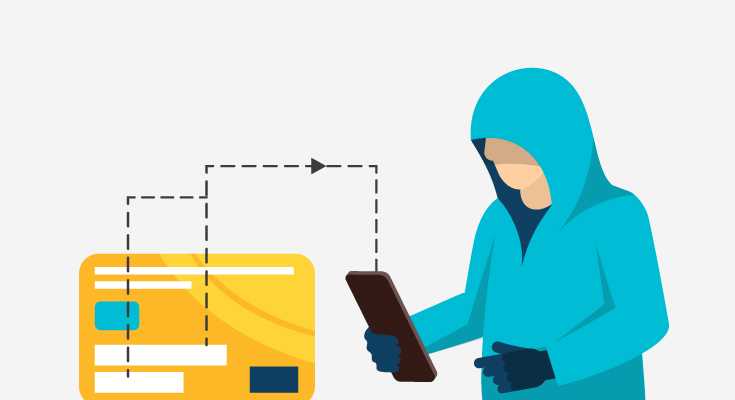Reports of debit cards, electronic funds, and ACH frauds were up by 32% in 2020 in comparison to 2019, according to reports created by the Federal Trade Commission (FTC). Most customers end up finding unauthorized charges on their account and it can be a hassle for banks to resolve debit card fraud. Fortunately for banks, financial institutions, and customers is that continuous monitoring of accounts can help in protecting your money.
Pros and Cons of Using a Debit Card
No doubt that Debit Cards allow for easy cashless and contactless transactions. Using debit cards has its own advantages and disadvantages.
Pros of Using Debit Card:
- No monthly bill. That’s probably the best advantage of using a debit card. Every time you make a transaction, the purchase amount is deducted from your current account balance. So you don’t have to worry about paying the bills every month like a credit card.
- Good for keeping track of your budget. The amount present in your bank is the amount you’re able to spend. Using a debit card with a limited balance can ensure that you don’t blow over your budget.
Cons of Using a Debit Card
- Credits are safer than debit cards. Any fraudster who can access your debit card can spend all the money in your account in an instant. If you don’t notice, there’s nothing you can do after the transaction is completed. Until the problem is solved, you’ll have to stay with the loss of your money. Credit cards are different, if someone gets access to your credit card and they make fraudulent transactions, the charges will be reversed instantly.
- An overdraft fee is often expensive. If you go over your account balance while using a credit card, then you may end up paying so much more than your initial spend.
What is Debit Card Fraud?
As the name suggests, debit card fraud is when fraud happens when a fraudster somehow gains access to a person’s debit card. Here are some common types of debit card fraud:
- A fraudster installs a card skimming device on a petrol pump’s card reader or a superstore’s card reader. Then they use the stolen card data to make unauthorized purchases.
- Someone finds old statements in your home, steals your account number, and makes unauthorized purchases of thousands of dollars.
- Someone can steal a person’s debit card and use the information to steal thousands of dollars.
- Customers often get a phishing email and entering your data can lead to fraudsters accessing your data.
- A data breach at a bank or financial institution can allow fraudsters to steal personal information.
Difference between Debit Card & Credit Card Fraud
The financial problems created by debit cards can be far harsher compared to credit card fraud. That’s why credit cards are considered a safer option while making a purchase. There are two primary federal laws “Fair Credit Billing Act (FCBA) and Electronic Fund Transfer Act (EFTA) which are built for consumer liability in the event of a debit or credit card fraud.
In the FCBA, credit card users are only responsible for up to $50 in terms of unauthorized transactions. At the same time, the liability of debit card fraud depends on the time taken to report it.
In ETFA regulation, if a person reports their debit card as stolen before any transaction happens. Then the customer isn’t responsible for any unauthorized transaction that happens. If you don’t report your stolen debit card, then the losses you’ll have to bear will depend on when you make the report:
- Reported Within 2 Days: Up to $50
- Reported 2-60 Days: Up to $500
- After 60 Days: It is possible that you may be responsible for all the money stolen
It is vital for customers to keep a tab on the activities that happen in their accounts. Constant monitoring allows both customers and businesses to keep an eye out for red flags.
Preventing Debit Card Fraud: Best Practices
When it comes to protecting yourself from debit card fraud, it is vital to stay on the defense. Constant transaction monitoring will help customers and businesses to keep track of all the out-of-place transactions. Here are the best practices for debit card fraud prevention:
1. Review Bank Statements/Authenticate Bank Statements
Online bank accounts often provide customers with a transaction log where customers can keep track of their purchases. Banks and financial institutions also need to authenticate the bank statements that customers present to the bank to ensure that they aren’t just trying to take advantage of the bank’s policies. DIRO bank account verification software assists in authenticating bank statements instantly.
2. Keep Track of Your Statement
All the physical statements that you decide to keep safe should be kept in a safe place so that no one can access the documents.
3. Keep Track of Your Debit Cards
As millions of transactions happen daily around the world virtually, not all customers use their cards regularly. It is easy to lose your debit card on the rare occasions that you actually use them. Keep track of your cards so they don’t fall into the wrong hands.
4. Be Wary About Where You Store Your Data
Avoid storing your debit card number or your PIN on your smartphone. Phishing emails, data hacks, and plain old theft can lead to criminals getting your information.
5. Protect Your Debit Card During Online Shopping
Make sure you don’t shop from online stores that seem fishy. There are some common precautions to take before shopping online:
- Before entering debit card information on any website, ensure there is an “https” on the website URL.
- Phishing scams can cause you to provide sensitive data to fraudsters. Fraudulent emails or texts are the origins of phishing scams.
- Consider using a third-party service like PayPal when playing online as these services prevent the websites from accessing your information.





